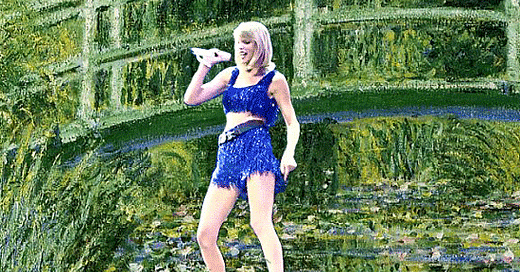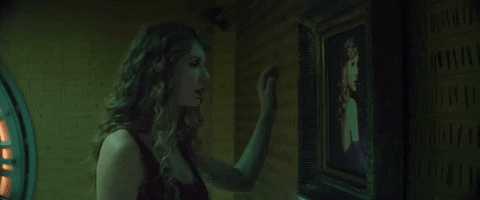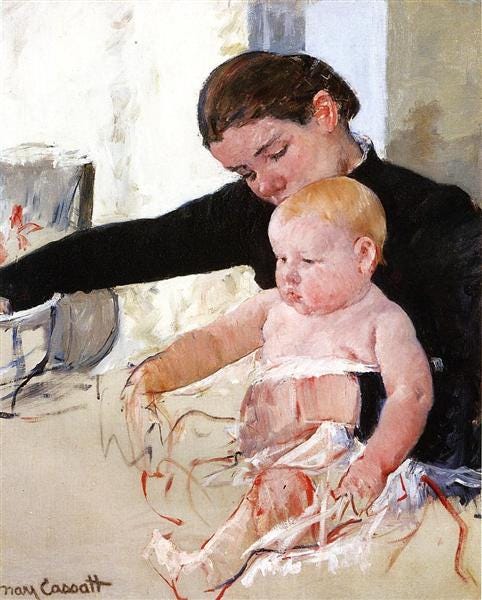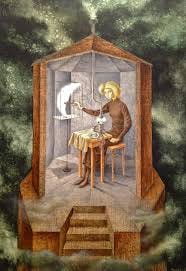You set up a paint set in the kitchen - How can you compare female painters to Taylor Swift?
What do a 19th-century Impressionist, a surrealist, and a medieval nun have in common with Taylor Swift? New show and tell episode on "Female Painters" out now.
“You set up a paint set in the kitchen and you’re talking to me” What happens when we view Taylor Swift’s music through the lens of female artists? In this week’s Show & Tell episode, we explore the work of three iconic women in art—Mary Cassatt, Remedios Varo, and Hildegard von Bingen—and connect their paintings to Taylor Swift’s songs. From the intimacy of motherhood to the surreal exhaustion of creating something greater than yourself, to the struggle of questioning authority, we discuss how these themes appear in both art and Taylor’s songwriting.
🎧 Listen above and ⬇️ scroll below to read Jodi’s extra credit about the artists from this week’s episode
🎥 Sneak Peek
Catch excerpts from the podcast and behind-the-scenes content on YouTube, TikTok, and Instagram. And, since this is a visual episode, be sure to check out the video version on YouTube!
📜 This Week’s Extra Credit by Jodi
We didn’t know which artists the others would discuss when we recorded this week’s episode, so it might have felt a bit random or disconnected to have three very different artists, from different eras and geographies, all connected to Taylor Swift. However, upon further reflection, they all have one crucial thing in common: they made work about what it means to be a woman in the world—the joys, the frustrations, the highs and the lows.
Mary Cassatt
Let’s start with Mary Cassatt, who’s probably the most well-known name on this list. Mary Cassatt was an American impressionist, working in the late 1800s and early 1900s, famous for painting women and children with a kind of softness that was considered radical and deeply personal for the time.
Why was painting mothers, caregivers, and bathing children considered “radical”? Her work focused on the ordinary, everyday labor of being a mother or caregiver—not the glamorous nights out at the opera that Edgar Degas painted, or society women out and about in Parisian street scenes. Cassatt’s work focused on the inner, private lives of women, often captured at home. She brought the reality of domesticity, childrearing, and caretaking to the forefront through a distinctly female lens—one filled with admiration, tenderness, and deep respect for women and children.
On the podcast, I mentioned how much Cassatt’s work reminded me of The Best Day—both feel like quiet snapshots of a mother’s love, captured with warmth and affection, honoring the simple acts of love in relationships that often go unnoticed.
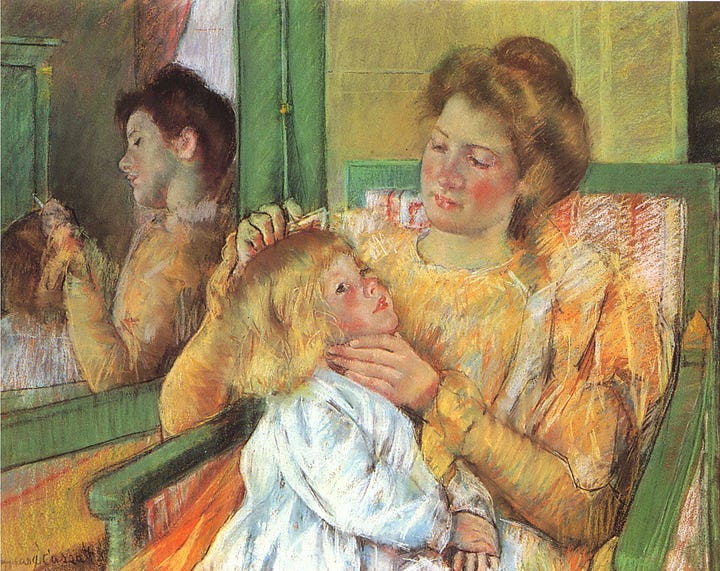
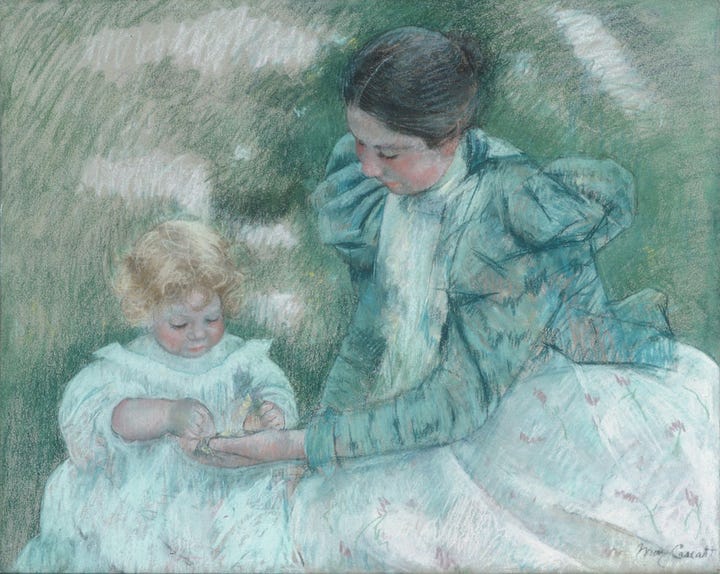
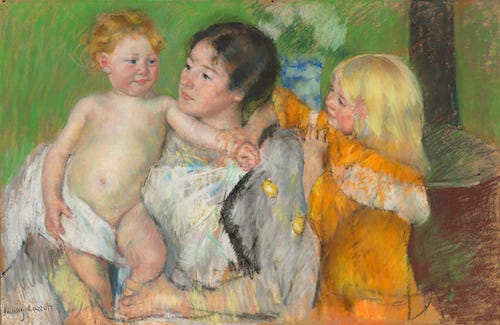
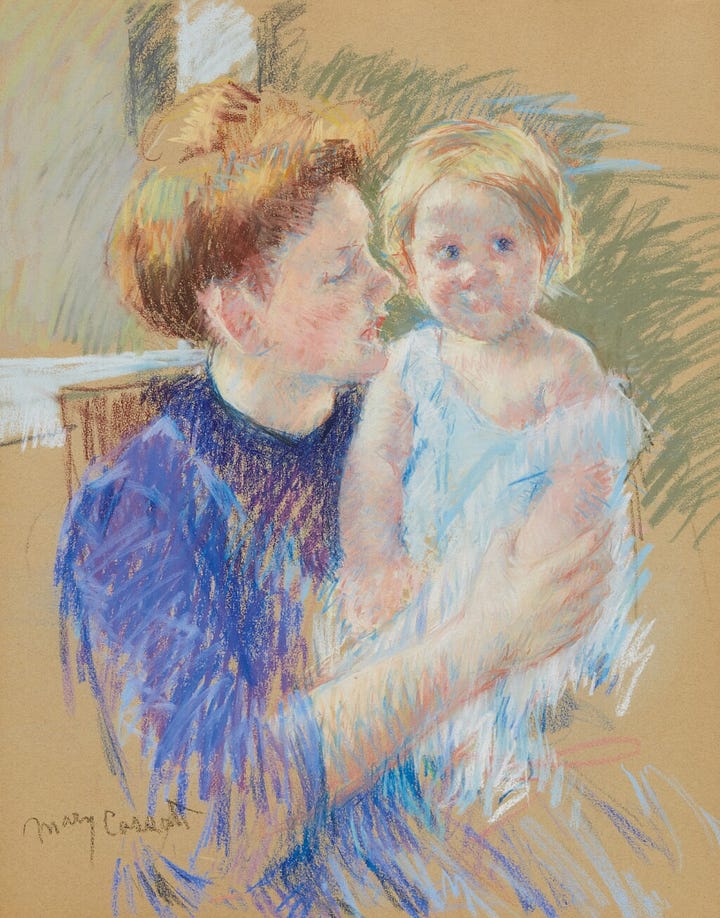
Remedios Varo
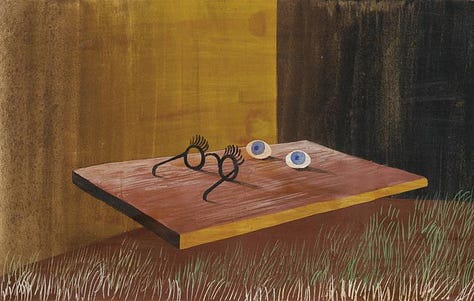
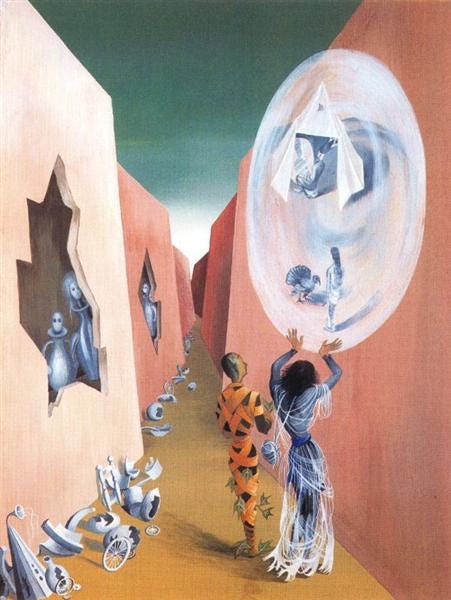
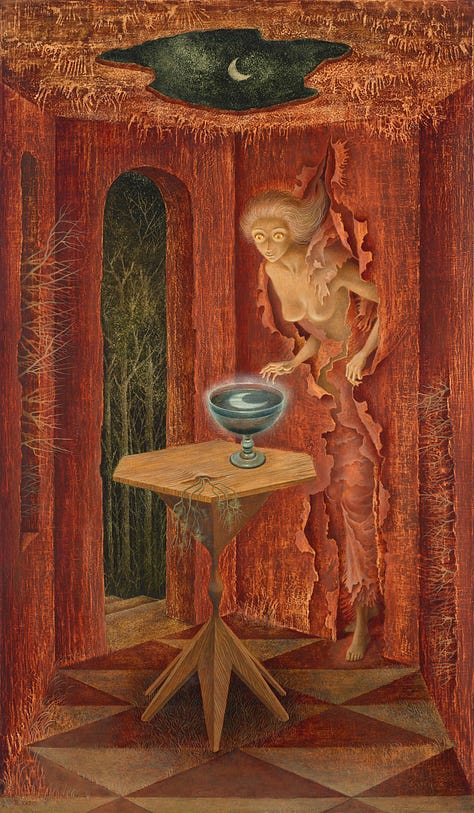
If Cassatt painted the seen work of women and caretaking, then Remedios Varo painted the unseen: the spiritual, psychological, and surreal.
Varo was a Spanish-born surrealist who ended up in Mexico City after escaping World War II. Like many surrealists, her paintings feel like magic and machinery all at once—the physical and spiritual worlds colliding.
Maansi brought up Papilla Estelar (Star Maker) in this week’s episode, which portrays a woman sitting alone in a tiny tower, cranking a machine, and feeding a caged crescent moon with a spoon. Outside her little tent, stars swirl in a void.
She looks, in a word, exhausted. There’s no window, no escape—just effort. And yet she’s doing something miraculous. She’s literally creating the cosmos!
Maansi reflected on how isolating it can feel to be in a role that people put on a pedestal—like motherhood—while still not understanding it. Whether it’s the mental load that comes with caregiving, or the unseen emotional labor women carry at home, at work, and in the world, Varo’s painting captures the exhaustion of putting in work no one notices; of pouring yourself out there for a world that may never fully see what that sacrifice has cost you.
Hildegard von Bingen
Just like our girl Taylor, Hildegard von Bingen was a true multi-hyphenate. A mystic, composer, theologian, medical writer, and yes—painter.
Throughout her life, Hildegard had visions that she brought to life in her work. In the episode, Jenn talked about one piece in particular that shows Hildegard leading her fellow nuns to start a new monastery after a vision told her to do so. The men in power above her said no, so she went above her abbot’s head, got permission from someone higher up, and did it anyway.
The painting is vivid and striking despite its flat medieval style: Hildegard stands at the front, staff in hand, surrounded by women who look at her with trust and resolve. It’s not subtle—it’s leadership.
And it’s rare to see a woman of that era place herself in a position of power at the center of a spiritual narrative. Hildegard pushed back against the patriarchy, challenged authority, and turned her vision into reality.
Jenn paired this work with Guilty as Sin?, because both she and the narrator of that song are caught in a spiritual dilemma: what do you do when your inner voice contradicts what the world expects of you?
So What Do They All Have in Common?
Cassatt. Varo. Hildegard. They lived wildly different lives. But each made work about the kind of labor that doesn’t get recognized—emotional, spiritual, maternal, visionary.
And each artist insisted: This subject matters. This deserves a focus and a frame.
So yes, we brought together an American Impressionist, a Spanish surrealist, and a medieval nun—compared them to Taylor Swift—and they each had something profound to say—about creating, about caretaking, and about being a woman.

